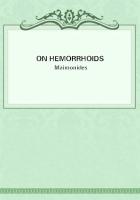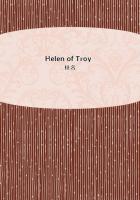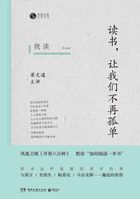The whole gross product, of a value of five milliards, is therefore in the hands of the productive class, that is, in the first place the farmers, who have produced it by advancing an annual working capital of two milliards, which corresponds to an invested capital of ten milliards. The agricultural products -- foodstuffs, raw materials, etc. -- which are required for the replacement of the working capital, including therefore the maintenance of all persons directly engaged in agriculture, are taken in natura from the total harvest and expended for the purpose of new agricultural production. Since, as we have seen, constant prices and simple reproduction on a given scale are assumed, the money value of the portion which is thus taken from the gross product is equal to two milliard livres. This portion, therefore, does not enter into general circulation. For, as we have noted, circulation which takes place only within a particular class, and not between one class and another, is excluded from the Tableau.
After the replacement of the working capital out of the gross product there remains a surplus of three milliards, of which two are in means of subsistence and one in raw materials. The rent which the farmers have to pay to the landlords is however only two-thirds of this sum, equal to two milliards. It will soon be seen why it is only these two milliards which figure under the heading of "net product" or "net income" {106}.
But in addition to the "total reproduction" of agriculture amounting in value to five milliards, of which three milliards enter into general circulation, there is also in the hands of the farmers, before the movement described in the Tableau begins, the whole " pécule "of the nation, two milliards of cash money. This comes about in the following way.
As the total harvest is the starting-point of the Tableau , this starting-point also forms the closing point of an economic year, for example, of the year 1758, from which point a new economic year begins.
During the course of this new year, 1759, the portion of the gross product destined to enter into circulation is distributed among the two other classes through the medium of a number of individual payments, purchases and sales.
These movements separated, following each other in succession, and stretching over a whole year, are however -- as was bound to happen in any case in the Tableau -- combined into a few characteristic transactions each of which embraces a whole year's operations at once. This, then, is how at the close of the year 1758 there has flowed back to the farmer class the money paid by it to the landlords as rent for the year 1757 (the Tableau itself will show how this comes about), amounting to two milliards; so that the farmer class can again throw this sum into circulation in 1759.
Since, however, that sum, as Quesnay observes, is much larger than is required in reality for the total circulation of the country (France), inasmuch as there is a constant succession of separate payments, the two milliard livres in the hands of the farmers represent the total money in circulation in the nation.
The class of landlords drawing rent first appears, as is the case sometimes even today, in the role of receivers of payments. On Quesnay's assumption the landlords proper receive only foursevenths of the two milliards of rent: two-sevenths go to the government, and one-seventh to the receivers of tithes. In Quesnay's day the Church was the biggest landlord in France and in addition received the tithes on all other landed property.
The working capital ( avances annuelles ) advanced by the "sterile" class in the course of a whole year consists of raw materials to the value of one milliard -- only raw materials, because tools, machinery, etc., are included among the products of that class itself. The many different roles, however, played by such products in the industrial enterprises of this class do not concern the Tableau any more than the circulation of commodities and money which takes place exclusively within that class.
The wages for the labour by which the sterile class transforms the raw materials into manufactured goods are equal to the value of the means of subsistence which it receives in part directly from the productive class, and in part indirectly, through the landlords. Although it is itself divided into capitalists and wage-workers, it forms, according to Quesnay's basic conception, an integral class which is in the pay of the productive class and of the landlords. The total industrial production, and consequently also its total circulation, which is distributed over the year following the harvest, is likewise combined into a single whole. It is therefore assumed that at the beginning of the movement set out in the Tableau the annual commodity production of the sterile class is entirely in its hands, and consequently that its whole working capital, consisting of raw materials to the value of one milliard, has been converted into goods to the value of two milliards, one-half of which represents the price of the means of subsistence consumed during this transformation. An objection might be raised here: Surely the sterile class also uses up industrial products for its own domestic needs; where are these shown, if its own total product passes through circulation to the other classes? This is the answer we are given: The sterile class not only itself consumes a portion of its own commodities, but in addition it strives to retain as much of the rest as possible. It therefore sells the commodities thrown by it into circulation above their real value, and must do this, as we have evaluated these commodities at the total value of their production. This, however, does not affect the figures of the Tableau , for the two other classes receive manufactured goods only to the value of their total production.















